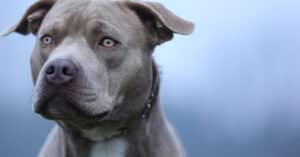The greyhound and Great Dane are both highly regarded purebred dogs that are adored by their owners. They both stand tall and proud, frequently attracting attention. However, these two canines have several distinguishing qualities that set them apart. In this post, we’ll examine greyhounds vs. Great Danes, including eight critical distinctions. Let’s get started!
Comparing Greyhound vs. Great Dane
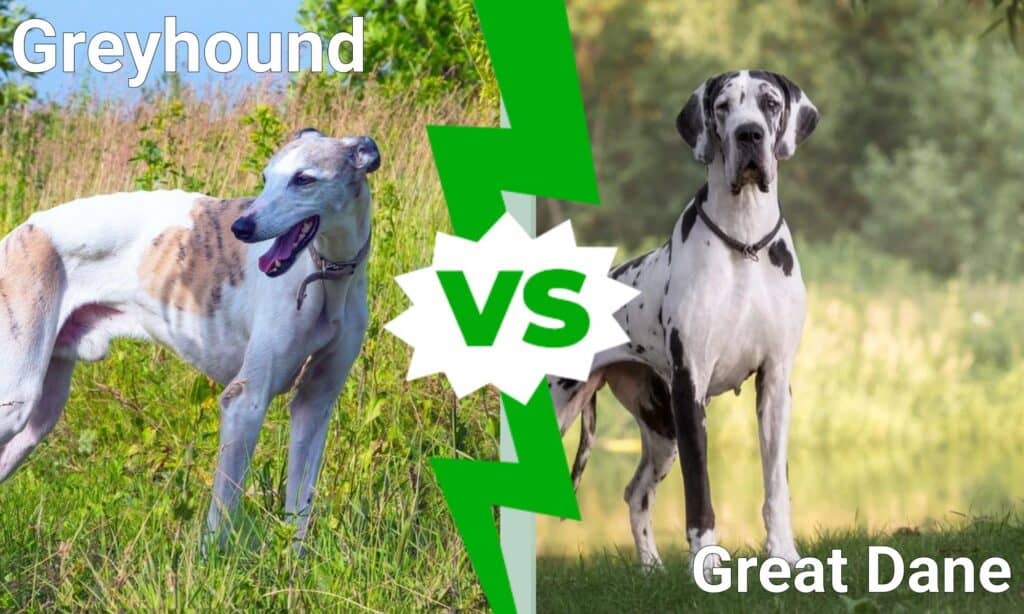
| Key Differences | Greyhound | Great Dane |
| Height | 27 – 30 inches | 30 – 34 inches |
| Weight | 60 to 100 lbs. | 100 to 200 lbs. |
| Coat type | Short, Silky | Short, Dense |
| Colors | Fawn, Blue, Gray, Red, White, Black | Fawn, Blue, Brindle, Merle, White, Black |
| Temperament | Social, Non-Aggressive, Low Energy, Wary of Strangers | Gentle, Reserved, Intelligent, Loving |
| Energy Levels | Lower than Average | Higher than Average |
| Life Expectancy | 12 to 14 Years | 7 to 10 Years |
| Health Problems | Bloating, Cancer, Heart Issues | Cancer, Heart Murmurs, Hip Dysplasia |
Key Differences between Greyhound vs. Great Dane
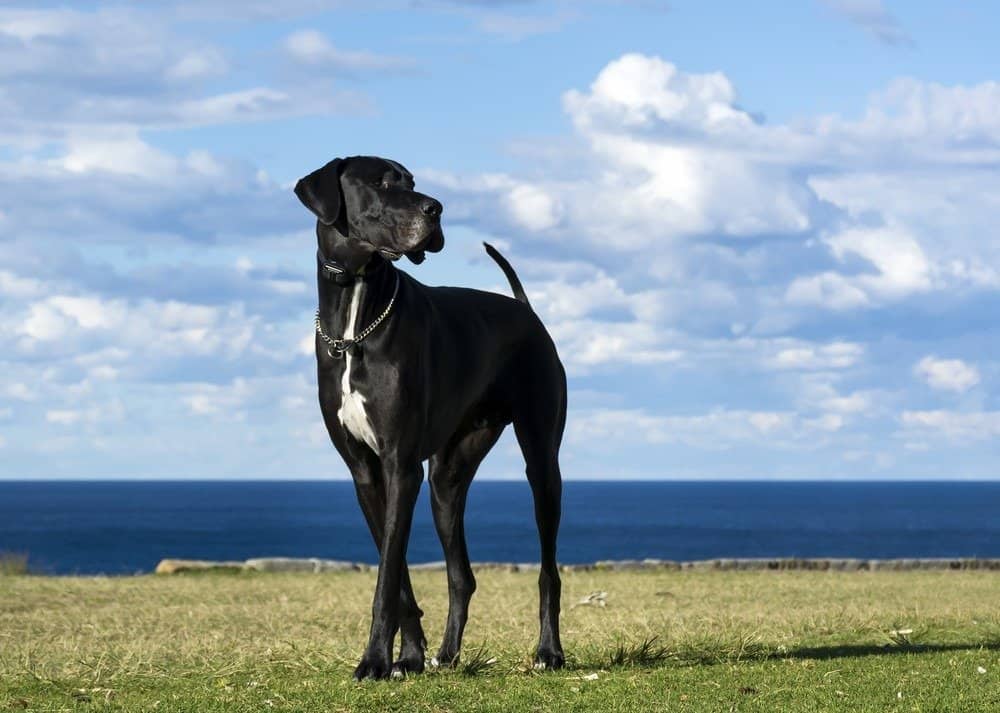
Greyhounds are about 3 inches shorter than Great Danes.
©RugliG/Shutterstock.com
Both the Great Dane and the greyhound are enormous canines with slender physiques and short coats. They are, however, very distinct dogs. For instance, the greyhound originated in the United Kingdom, whereas the Great Dane originated in Germany. Greyhounds are generally three inches shorter than Great Danes. Greyhounds weigh approximately 110 pounds less than the average Great Dane. These are just a few notable distinctions.
Appearance
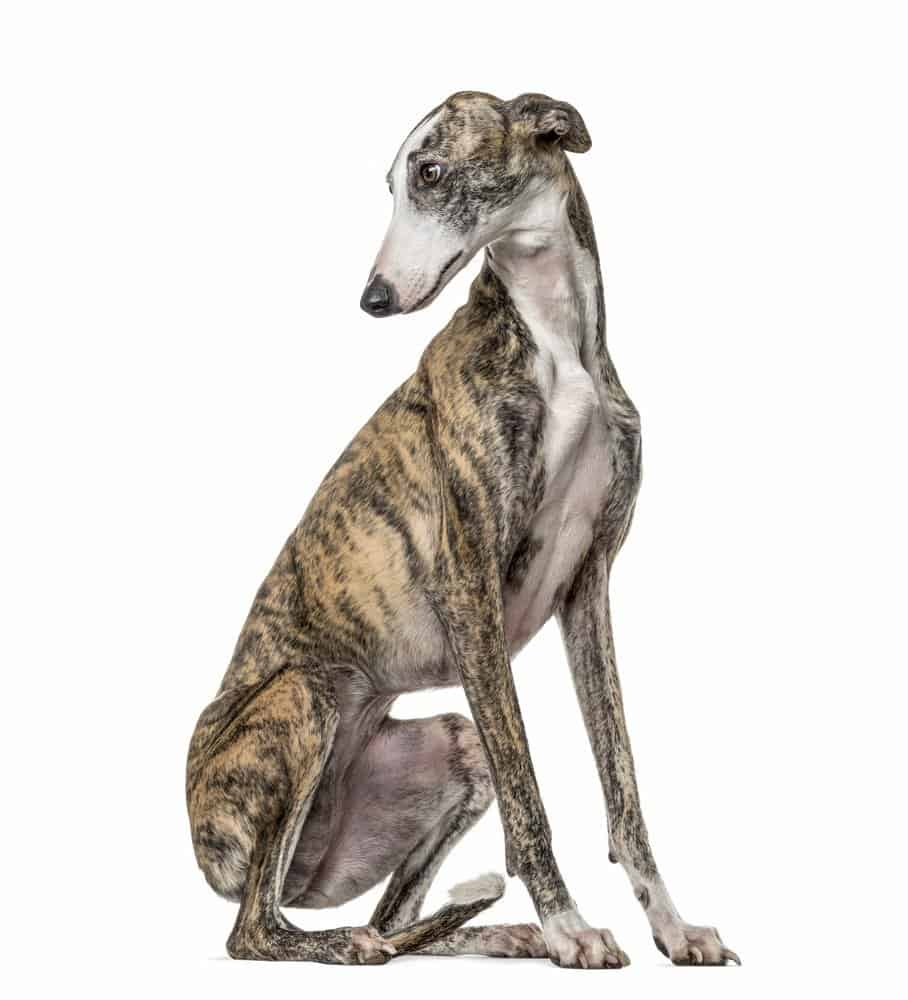
Greyhounds weigh approximately 110 pounds less than Great Danes.
©Eric Isselee/Shutterstock.com
Height
Though it may not appear so from a distance, the greyhound is a large dog with a height of 28 to 30 inches. On the other hand, the Great Dane is considered a giant dog, standing between 30 and 34 inches tall when fully grown. This makes the Great Dane, along with the English mastiff and Saint Bernard, one of the world’s largest dogs.
Weight
The Great Dane is significantly larger than the greyhound, reaching up to 200 pounds when fully grown. Greyhounds weigh between 60 and 100 pounds in maturity.

Greyhound hair is short, silky, and fine, while the Great Dane’s fur is short and considerably coarser.
©Liliya Kulianionak/Shutterstock.com
Coat Type
The coats of the greyhound and the Great Dane are short and bore a similarity from a distance. However, if you were to pet each pup you would note that the greyhound hair is short and fine, with a silky touch, while the Great Dane is short and considerably coarser. They both shed mildly and require minimal care.
Colors
Greyhounds can be seen in a range of hues, including white, gray, blue, red, and black. The Great Dane is also available in these hues, apart from red, but also can be found in Merle and Brindle.
Characteristics
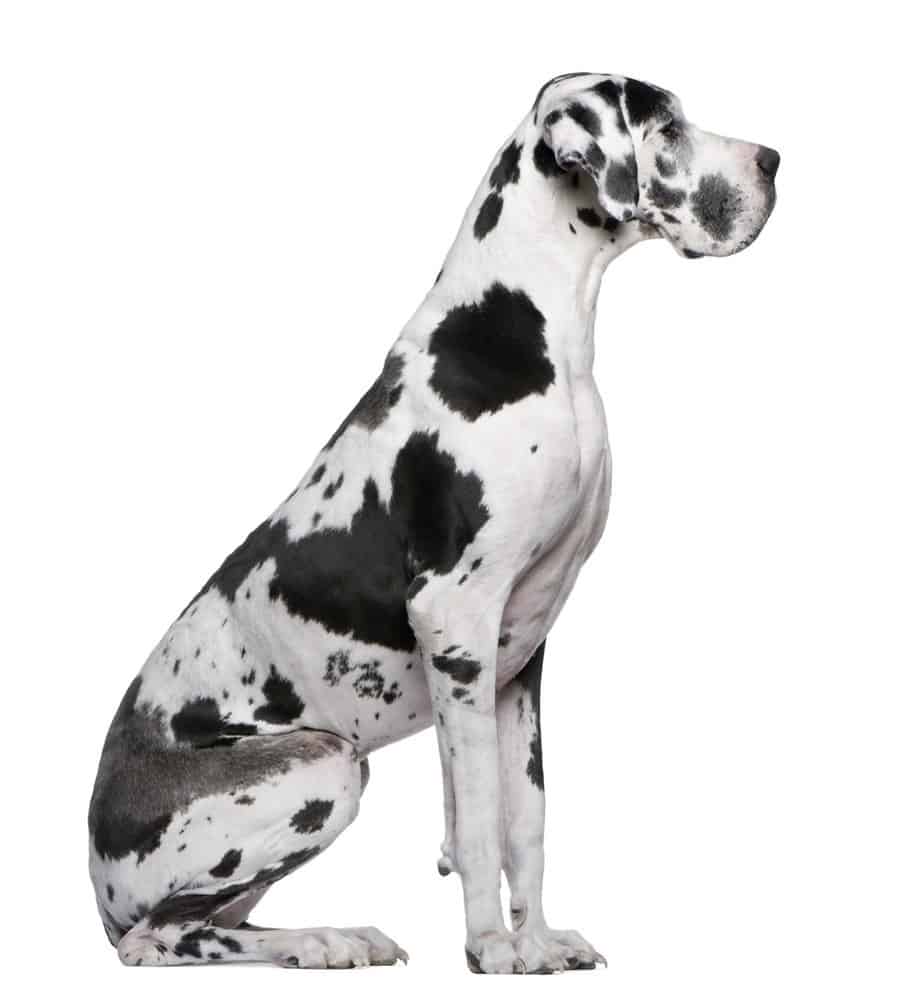
Great Danes are people-friendly and have a kind temperament, while greyhounds are very intelligent.
©Eric Isselee/Shutterstock.com
Temperament
Great Danes get along well with people and enjoy socializing due to their kind and loving temperament. They are extraordinarily intelligent and energetic. They are not, however, the most playful breed and struggle with unusual daily routines. Great Danes are excellent guard dogs and are devoted to their family. Despite their enormous size, they are extremely docile and adapt well to their surroundings. They thrive in the presence of a family member versus being left alone.
Greyhounds are exceptionally bright, social, and non-aggressive. When given adequate exercise, this breed can develop into a calm, loving house pet that gets along well with other pets and children. Although they are not the best guard dogs, they will keep a vigilant lookout. They are insatiably affectionate and sociable. Additionally, both breeds are quite trainable.
Energy Levels
Due to the Great Dane’s higher energy level than the ordinary dog, they do not sleep nearly as much as the greyhound. They must walk and/or move around for at least a couple of hours each day to achieve their daily activity requirements. They do not necessitate strenuous activity. Giant dogs remain huge puppies for an extended period. When giant dogs are younger, their joints are prone to injury, making exercise extremely cautious.
Greyhounds become calm and tranquil after spending sufficient time outside. They enjoy sleeping ad will snuggle up to their owner. Despite their peaceful temperament, greyhounds can run at speeds of up to 45 miles per hour! They are widely bred for dog racing contests as a result.
Health Factors

Greyhounds live approximately 12-14 years, while Great Danes live seven to 10 years on average.
©iStock.com/BiancaGrueneberg
Life Expectancy
The typical lifespan of a healthy greyhound is 12-14 years, however, many live longer with proper care. The Great Dane is one of the shortest-lived domestic dog breeds, with an average lifespan of approximately seven to 10 years. This is largely due to their colossal size and the associated health problems. As a result, it is critical to schedule regular checks with your veterinarian, even though both dog breeds are generally healthy overall.
Health Problems
Great Danes are healthy for the most part, despite their shorter-than-average lifespan. However, due to its size, the Great Dane can suffer joint problems such as hip dysplasia, musculoskeletal traumas, and heart murmurs. Greyhounds are more prone to bloat, bone cancer, and cardiac problems than other dog breeds.
Wrapping Up
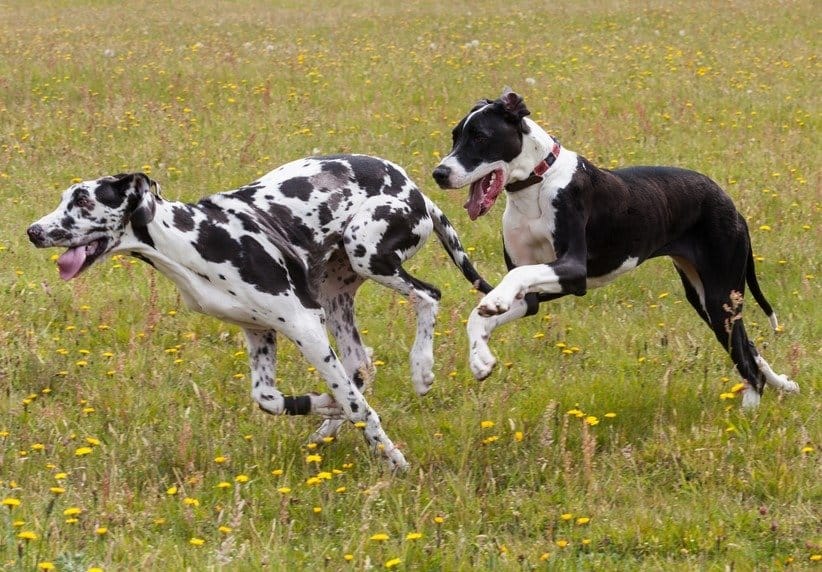
Great Danes are energetic and do not sleep much, while greyhounds love sleeping.
©Claire Plumridge/Shutterstock.com
When compared to the greyhound, the Great Dane is a quite distinct canine breed. With adequate exercise, the greyhound is a large dog that is typically peaceful. As such, it is an ideal dog for someone who is active yet enjoys spending time at home. The Great Dane is a giant, energetic dog that requires extra attention in the home. Both are devoted dogs who thrive outdoors and indoors, remaining devoted to their families throughout their lives.
The photo featured at the top of this post is © Liliya Kulianionak/Shutterstock.com
Ready to discover the top 10 cutest dog breeds in the entire world?
How about the fastest dogs, the largest dogs and those that are -- quite frankly -- just the kindest dogs on the planet? Each day, AZ Animals sends out lists just like this to our thousands of email subscribers. And the best part? It's FREE. Join today by entering your email below.
Thank you for reading! Have some feedback for us? Contact the AZ Animals editorial team.





